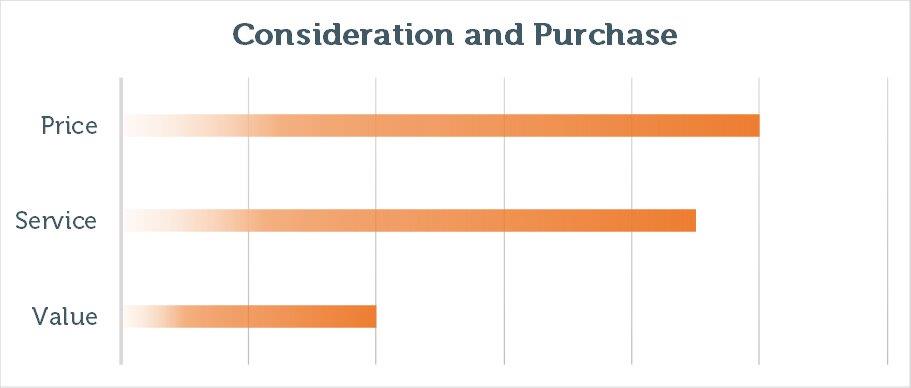Planning Your Smart Urban Property
Smart has become the new normal as urbanisation in Australia accelerates and vertical living tenancy demands continue to increase.
In response, new property developments are accelerating to support urbanisation, driving increased environmentally sustainable design, renewables, gigabit fibre, proptech, AI, IoT sensing and automation for more efficient and smarter properties for smart cities.
With existing properties in capital cities representing the overwhelming property inventory majority, they too, need to fundamentally be considered in the urbanisation transition.
Read on for ways to optimise your property for a more demanding urbanised market.
Communities are in control
Convergence of technology and urbanisation are shaping how fast our cities and urban communities are changing. To meet expectations and demand we need well-designed economic and social interventions.
Technology might help us find even better ways to create renewable energy and better buildings to meet increasing tenant preferences for high standards and services that help, not hinder, urban lifestyles.
Whether developing a new property or refurbishing and retrofitting an existing property, it’s vital to recognise that purchasers and lessees, collectively urban communities, are in control of where they prefer to live, work and learn.
The new urban community are exercising their choice and choosing affordable smart urban properties with design aesthetics, improved amenities and in-building services.
Smart urban communities also demand least cost Core 4 essential services from progressive providers to reduce lot liabilities and outgoings through the new essential services category of embedded electricity, gas, hot water and 10 gigabit fibre.
Smart urban properties outperform economic conditions
Smart urban properties are recognised as higher value properties and are clearly the primary driver of recent and current property market gains.
Notwithstanding interest rate and tax cuts, reduced uncertainty about housing, more positive media and some easing in lending guidelines have combined to generate significant improvement with apartments performing stronger relative to houses.
With purchasers back borrowing money and looking for a smart investment, planning for smart urban properties is future proofing your investment in a market in transition and expectation from new urban communities.
Private, distributed essential services networks are the future, right now
It feels like a lifetime, but essential services are now transitioning from their traditional unidirectional markets to more progressive bidirectional markets.
Electricity markets in Australia and globally are transitioning from centralised fossil electricity generation to distributed renewable generation and storage with Australia already set to achieve 50 per cent renewables by 2030 without government intervention.
In September 2019, the Clean Energy Regulator announced that Australia had met the 2020 Large-scale Renewable Energy Target more than a year ahead of schedule, which is a considerable achievement given that just over half of the target had been met at the beginning of 2017.
Private distributed networks, like b.energy networks, deliver least cost essential services and smarter properties with solutions that range from electric vehicle and e-bike charging, drone readiness, 10 Gigabit fibre, proptech, water leakage detection, matching energy use to occupancy, renewable energy generation and storage, dynamic power consumption and advanced community engagement platforms and property management services for engaged vertical living as well as micro-grid communities.
In planning your smart urban property, engage as early as you can in your concept phase with progressive Core 4 essential services providers to tailor bankable solutions and options that attract purchasers and increase valuations and yields.

Don’t disaggregate utilities and communications, actively engage progressive Core 4 essential services providers
Utilities and communications markets are converging and present an early majority opportunity for progressive property owners, developers, managers and their smart urban communities.
Disaggregation of this convergence significantly reduces the economic and environmental benefit to the new smart urban property.
In planning your smart urban property, engage with progressive Core 4 essential services providers in the aggregate for greater compound benefit. This means that progressive property owners, developers and managers can engage “service line by service line” over time as part of the smart urban property lifecycle.
“Like all disruptive-innovation business models, aggregated private utilities and communications service providers deliver greater compound benefit with modular and extensible engagement options” said b.energy chairman James Dunstan.
Future proof your investments and legacy
We all know that a strong brand legacy is vital in today’s competitive property market. Progressive property owners, developers and managers that preserve their property vision and legacy are creating engaged communities beyond the sale or lease and lead the way in future proofing their property investments and their brand legacy.
In planning your new smart urban property, progressive Core 4 essential services providers like b.energy are playing a critical role innovating private embedded networks to future proof smart urban developments without any capital or risk and is proof of how the industry is moving.
Plan for your new smart urban property to incorporate a private, distributed essential services network with Core 4 embedded electricity, gas, hot water, and 10 gigabit fibre that far exceeds that of the current National Broadband Network standard, and that also offer integrated proptech where smart digital technology of AI and IoT can now improve what buildings offer, optimise how they function and deliver higher property valuations and yields to meet tenancy expectations of affordability and environmentally sustainable design.
A progressive essential services partner needs to provide for a smart city future.

Project economics and experiences need to be equally valued
When planning your smart urban property, don’t overlook the significance of an essential service providers brand legacy. Research shows that progressive property professionals and smart urban property purchasers and lessees do not discern between price and service when it comes to essential services.
b.energy prides its economic and social capital success in providing exceptional services and experiences critical to having engaged stakeholders and communities that live, work and learn in your smart urban property.

With expectations already high in 2019, we wait to see what's in store for 2020.
James Dunstan is a recognised strategy, sustainability and energy markets executive leading a transformation in the essential services category with private, distributed embedded networks.
If your planning for a new smart property or a planning a transition to a smart urban property, b.energy can help you. Talk with us today.
b.energy is an exhibitor at Urbanity 2019.
The Urban Developer is proud to partner with b.energy to deliver this article to you. In doing so, we can continue to publish our free daily news, information, insights and opinion to you, our valued readers.















